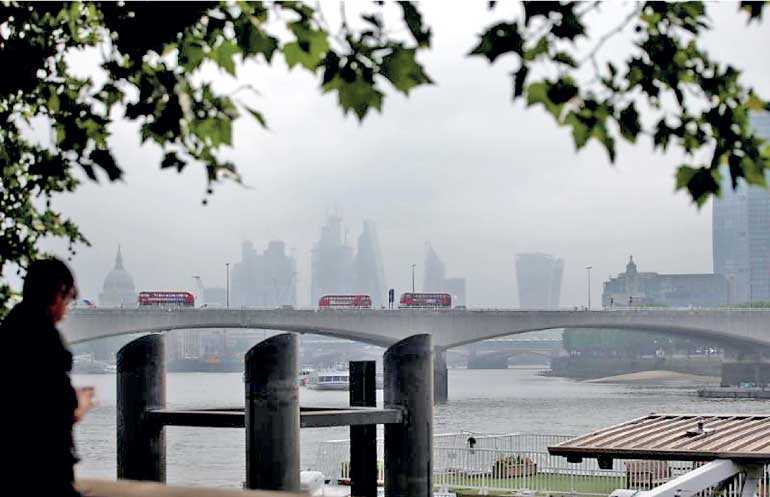Tuesday Dec 09, 2025
Tuesday Dec 09, 2025
Monday, 13 August 2018 00:01 - - {{hitsCtrl.values.hits}}

A traditional red London bus crosses Waterloo Bridge, with the financial district in the background, in London Britain, May 31, 2018 - REUTERS
LONDON (Reuters): Britain’s economy picked up some speed in the second quarter after a sharp winter slowdown in early 2018 but lost momentum in June, underlining its stuttering performance ahead of Brexit in less than eight months’ time.
Gross domestic product expanded 0.4% in the April-June period, as expected in a Reuters poll of economists, the Office for National Statistics said.
The economy’s annual growth rate picked up slightly to 1.3% in the second quarter, only a touch above a nearly six-year low of 1.2% at the start of the year.
Sterling, shaken over the last week by growing talk of a no-deal Brexit, was little moved by the data which painted a familiar picture of growth led by the services sector while businesses were reluctant to raise investment much.
Britain’s economy slowed after the 2016 vote to leave the European Union and is expected to continue to expand at a weaker pace than most other developed economies as the March 2019 Brexit date approaches.
But news that the economy recovered from its winter slump is likely to reassure Bank of England policymakers who last week raised interest rates to a new post-financial crisis high of 0.75% despite concerns about the approach of Brexit.
Britain’s government has yet to agree a divorce deal with Brussels and has stepped up planning for the possibility of leaving the bloc without any formal agreement.
“We fear the chill winds from Brexit will only intensify unless the withdrawal agreement is signed off soon,” economist Samuel Tombs of consultancy Pantheon Macroeconomics said. The ONS said the economy had been helped in the second quarter by retail sales and construction recovering from heavy snow earlier in the year.
“However, manufacturing continued to fall back from its high point at the end of last year and underlying growth remained modest by historical standards,” ONS statistician Rob Kent-Smith said.
In June alone, the economy grew 0.1% after a 0.3% rise in May, weaker than forecasts in the Reuters poll for a 0.2% expansion, the ONS said.
Growth over the second quarter was driven mostly by the service sector, the ONS said. Net trade was the biggest drag on the economy since the third quarter of 2016.
Quarterly growth in household spending quickened slightly to 0.3% from 0.2% in the first quarter, but stood only 1.1% higher than a year ago — the weakest annual increase since early 2012.
Consumers have struggled to cope with weak wage growth for much of the past decade and a spike in inflation after the Brexit vote only added to the problem. More recently, wages have risen more quickly than inflation but there have been signs that household finances remain stretched.
Retailers in particular have struggled against weak household spending. On Friday department store chain House of Fraser was bought from its administrators by discount retailer Sports Direct.
The ONS said business investment expanded 0.5% quarter-on-quarter, only barely outweighing a 0.4% drop in the first three months of the year. The year-on-year rise of 0.8% in business investment was the weakest since the end of 2016.